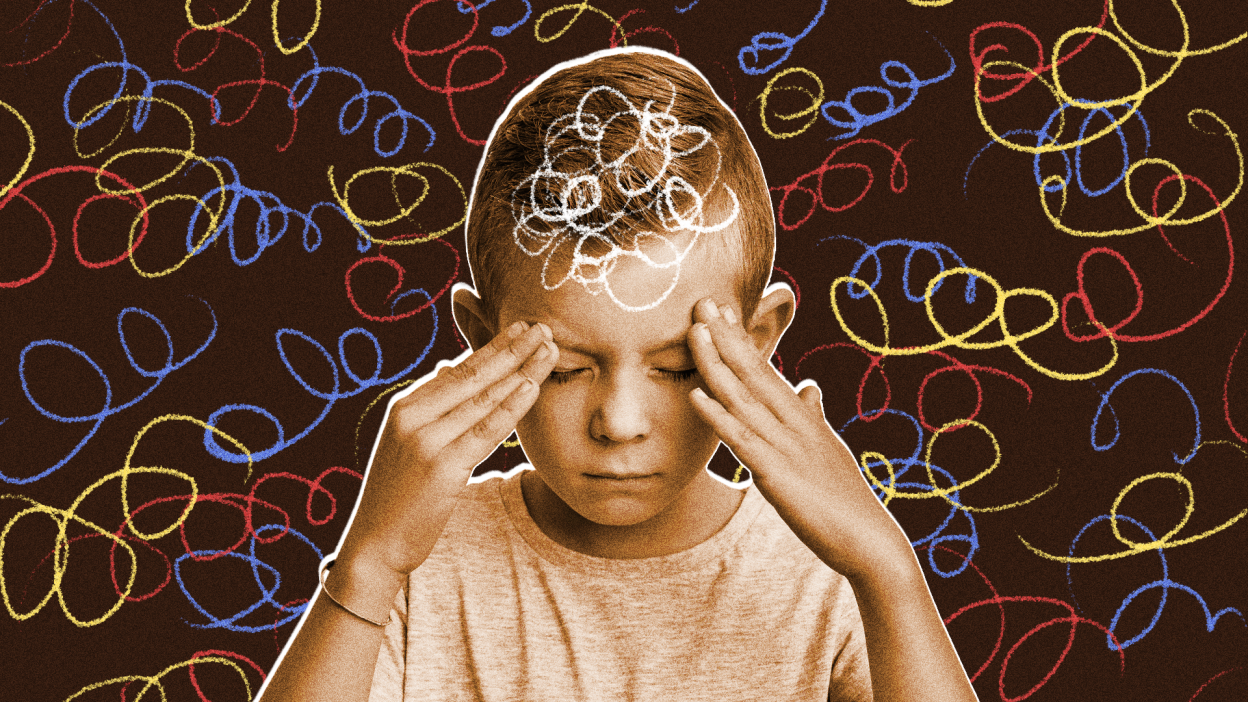Maybe you’ve noticed your child doing repetitive behaviors or being overly concerned with safety—and wondered if it’s more than a personality quirk. Because obsessive compulsive disorder (OCD) can start in childhood, it’s important to be aware of the signs.
Experts estimate that about 1 in 200 children have OCD. OCD can show up at any age, but symptoms will generally start to arise between the ages of eight and 12 or during the late teen to young adult years.
According to the Centers for Disease Control and Prevention (CDC), “Children may have an obsessive-compulsive disorder (OCD) when unwanted thoughts, and the behaviors they feel they must do because of the thoughts, happen frequently, take up a lot of time (more than an hour a day), interfere with their activities, or make them very upset. The thoughts are called obsessions. The behaviors are called compulsions.”
Symptoms of OCD in childhood
The CDC and Child Mind Institute says there are common ways OCD can manifest for children.
Common obsessions
Unwanted thoughts, impulses, or images that occur repeatedly, causing anxiety or distress
Fear of contamination from germs, waste, vomit, chemicals, etc
A need to make things even or symmetrical
Extreme worry about safety, like potential accidents, fires, or someone getting hurt
Fear they might do something violent or terrible
Common compulsions
Repeated hand washing (beyond normal hygiene for preventing spread of germs)
Locking doors or checking switches a certain number of times
Lining up objects or touching parts of their bodies symmetrically, like scratching both ears or squeezing both fists
Counting a certain number of times or repeating something mentally
Repeating actions according to certain rules, thinking if they do them “right” the obsession will go away or they will be safe
Repeatedly asking for reassurance that something bad isn’t going to happen
Clinical psychologist Dr. Jenny Yip began dealing with her own OCD as a child. Now she helps others living with OCD and anxiety.
“OCD can occur at any age. It most commonly shows up around 8 to 12 years old. However, in my practice, we’ve had kids who are much, much younger, who are 3 or 4, with full-blown OCD,” Yip said. “Tantrums are likely to show up with younger kids, while as kids get older, signs of OCD might be argumentative or oppositional behavior and aggressiveness.”
“Look for any type of repetitive behaviors or clinginess. Asking the same questions in a million different ways to get reassurance that everything will be okay or that something is safe. This may be because your child is afraid of harm, terrible outcomes of strangers, or anything that is unfamiliar to them,” Yip said. “If they have certain rules that seem very unnecessary or excessive, that demand that things have to happen in a certain way or with certain people. Also, tantrums. If you see a lot of tantrums — not because you won’t buy them candy — but because certain idiosyncratic rules are not being followed.”
What’s normal and what’s cause for concern?
Most children go through phases of mild idiosyncrasy as they develop. Temporary quirks, behaviors, or preoccupations may not be worrisome.
“If something gets prolonged and worsens, then it’s time to seek professional help. Any time behavior is debilitating or interferes with functioning, whether it’s social, academic, sports, or family, then it’s time to seek a professional,” Yip said.
Impact and challenges of childhood OCD
OCD can affect a child’s social interactions and performance in school. “Your child’s attention is being consumed by the intrusive thought, and therefore, you have no ability to focus on whatever the task is at hand,” Yip said.
OCD may be focused around certain people, places, or situations, Yip said, causing a child to avoid the triggering cause. “For example, if the OCD symptoms involve peers, your child will want to avoid school, teachers, and peers. If it’s a fear of contamination, it could be everything. If it’s checking, and your child is constantly checking their shoelaces, buttons, pencils, or schoolwork, that’s going to interfere with whatever task it is that requires that behavior.”
Children who have OCD may also have tic disorders (like Tourette syndrome), anxiety, depression, or disruptive behaviors. Parenting a child with OCD comes with its own challenges.
“Our natural inclination is to nurture and comfort our children. However, when it comes to OCD, there’s a fine boundary between supporting your child without supporting OCD,” Yip said. “It’s the opposite of what our natural inclination is, and that is the biggest struggle.”
How to get help
Childhood OCD can be treated with cognitive behavior therapy and sometimes medication. The CDC says it’s important for both families and schools to be involved in the therapy process, helping children manage stress and be supportive without unintentionally making the obsessions and compulsions worse.
“Make sure you find a therapist who has successful experience treating OCD from an evidence-based treatment method, which is exposure therapy. Additionally, when it comes to working with young children, make sure your therapist takes the approach of including any involved family members as part of treatment,” Yip said. “When it comes to children, OCD doesn’t just affect the child. OCD affects the entire family, and therefore, treatment needs to involve the entire family.”
If you think your child is showing signs of OCD, look for a therapist who can teach both of you how to cope with symptoms. The CDC recommends these resources:
Psychologist Locator (a service of the American Psychological Association Practice Organization).
Child and Adolescent Psychiatrist Finder (by the American Academy of Child and Adolescent Psychiatry).
Find a Cognitive Behavioral Therapist (a search tool by the Association for Behavioral and Cognitive Therapies).
FindTreatment.gov (a resource for finding treatment facilities).
“Your job as a parent is to prepare your child for real life, and a lot of that means helping your child build the tolerance and resiliency to do challenging things, such as defeating their OCD,” Yip said. “As a parent, it’s really hard to see your child suffer, but if you placate your child, you’re not placating your child, you’re placating their OCD, which will only empower OCD instead of your child.”




